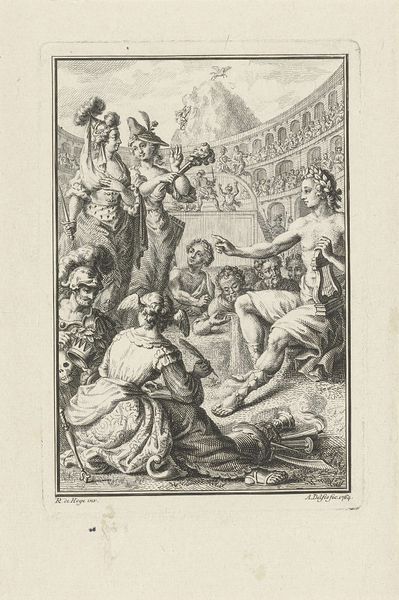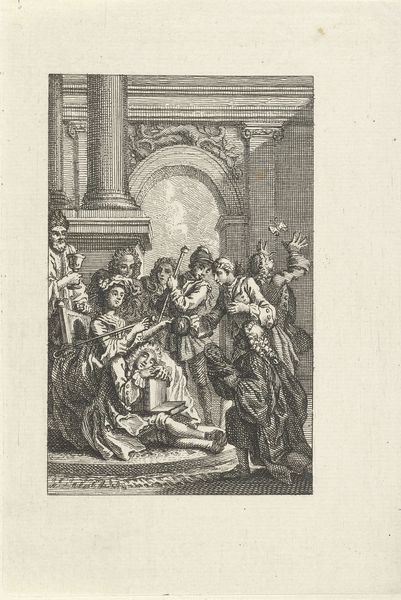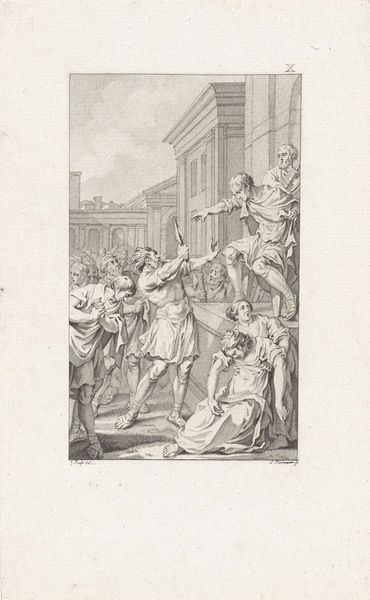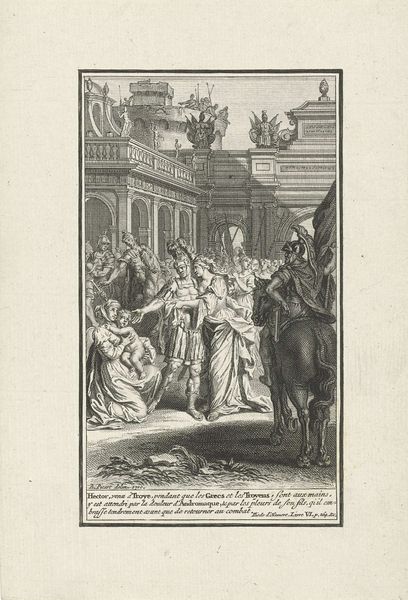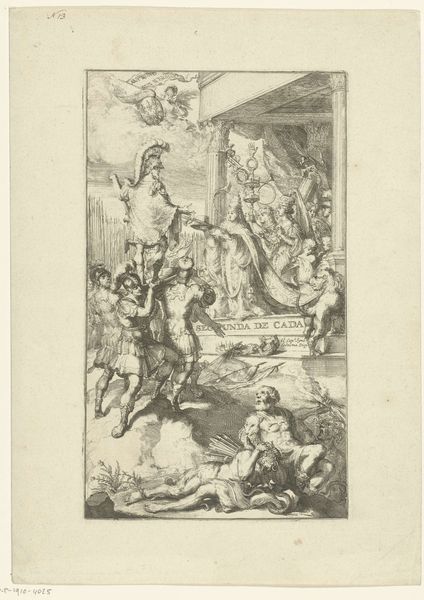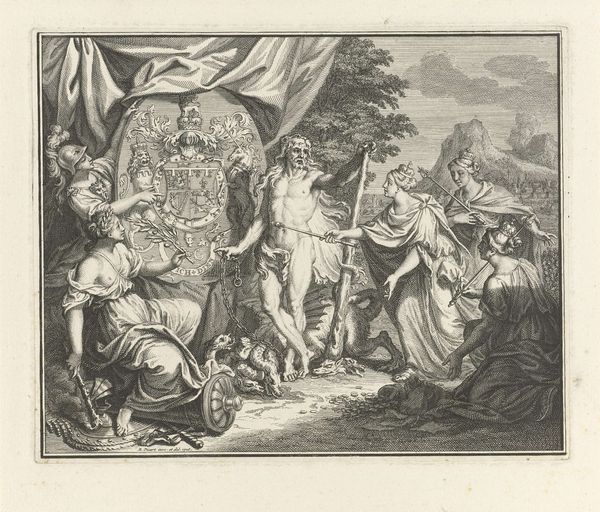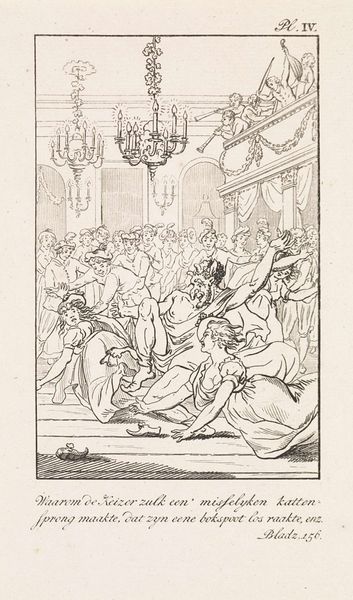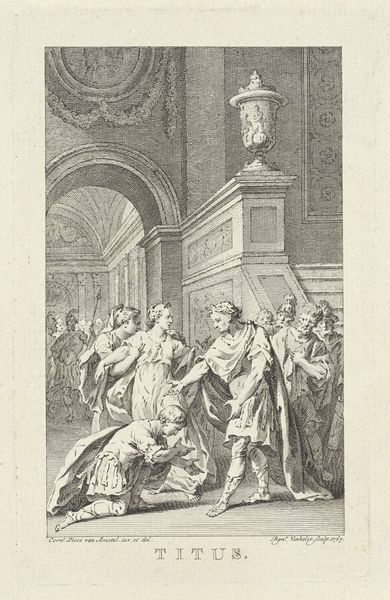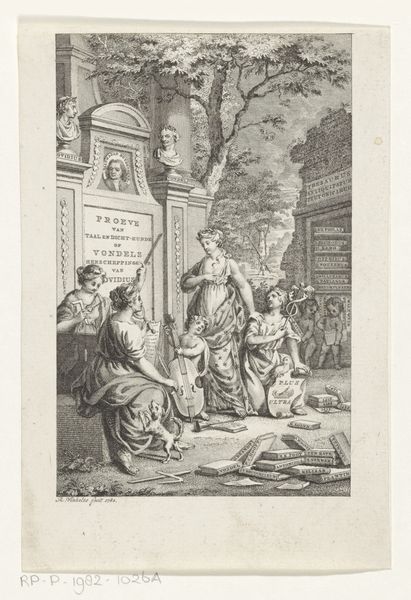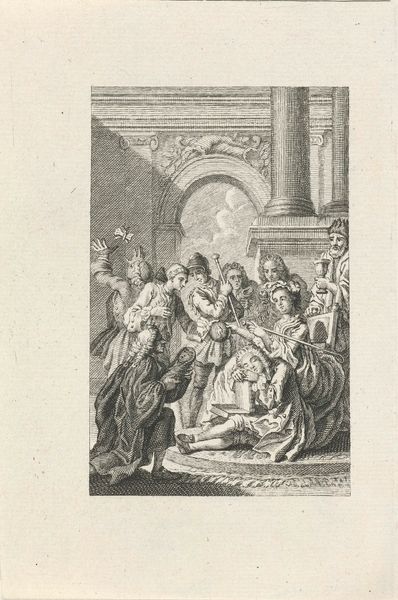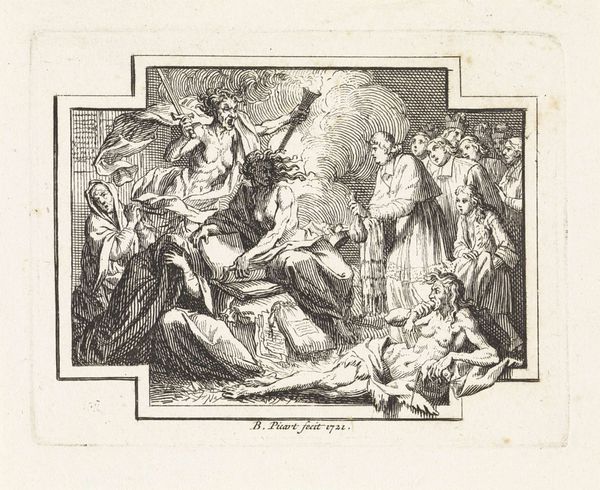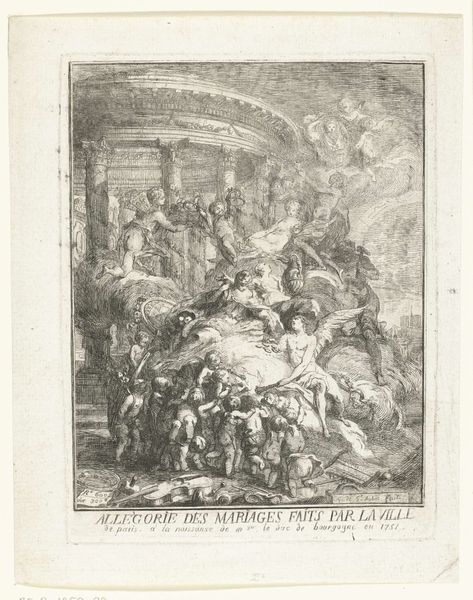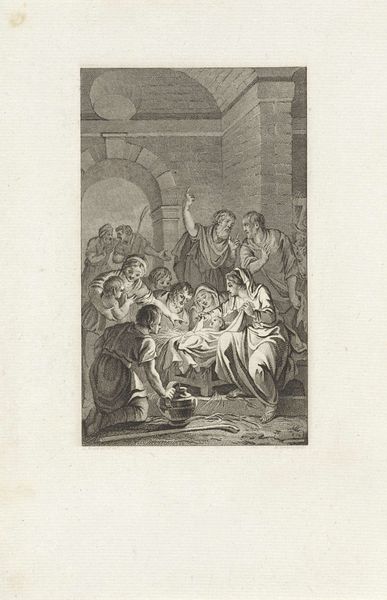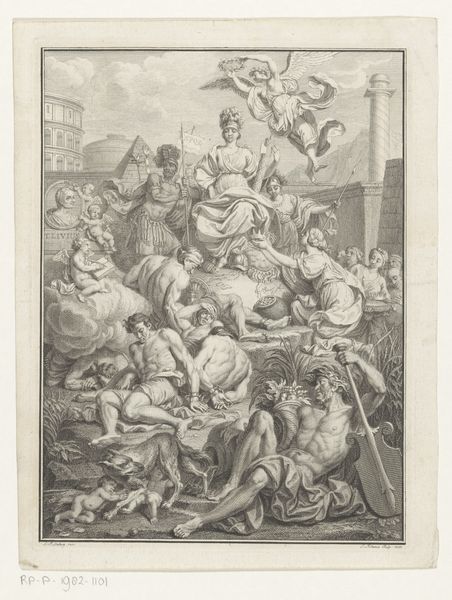
Dimensions: height 137 mm, width 94 mm
Copyright: Rijks Museum: Open Domain
Curator: Well, that's a busy scene. I am drawn in, though—the sheer volume of figures is intriguing, although the line work looks incredibly precise and a little dry. Editor: Here we have an engraving from 1764 by Abraham Delfos titled, “Allegory with Apollo, Muses, and Artists in Amphitheater.” You can find it here at the Rijksmuseum. It’s a fascinating commentary on the hierarchy of artistic practice during that time. Curator: Hierarchy indeed. It looks as though every single social role is defined by adornment. Note how the labor, the pure *making*, seems relegated to the smallest figures huddled at the feet of these allegorical titans. I am curious as to the workshops where the original drawings were made, how Delfos was involved. Editor: It's crucial to understand that these kinds of allegories played a key role in defining art's role in civic society. Amphitheaters in prints, for instance, symbolized enlightenment and public virtue—essential attributes during the era of burgeoning national academies. How do we view institutions then? Curator: Institutions define access, then and now. To create these works, the engravers needed access to the plates, ink, tools. This image subtly reveals how artistic value, or even success, is dependent on tangible means. Editor: Absolutely. Consider also the choice of Apollo. The "leader" of the muses references not just divine inspiration but also courtly patronage—necessary for any artist to survive and thrive. Curator: Patronage requires tangible outputs; consider the cost, and ultimately the consumer, of the engravings made available on paper following this era in contrast to painted portraits or large canvases. Editor: I'm struck by how such small prints could circulate widely, disseminating these visual ideas throughout society, impacting ideas about cultural prestige. These allegorical prints weren't just decorations; they actively participated in shaping art's very purpose in public consciousness. Curator: And considering the materials required to produce multiple reproductions, it calls into question the role each of those individual prints held for various audiences, not to mention the source of materials—wood, labor, etc. The print as a common object has as much bearing on the impact and reception of its subjects as it holds value. Editor: Precisely, so even in seemingly classical subject matter such as these prints of Apollo, the prints held substantial agency shaping culture far beyond courtly spheres. Curator: Examining those undercurrents in images such as these helps illuminate the foundations upon which public opinion forms to this very day.
Comments
No comments
Be the first to comment and join the conversation on the ultimate creative platform.
